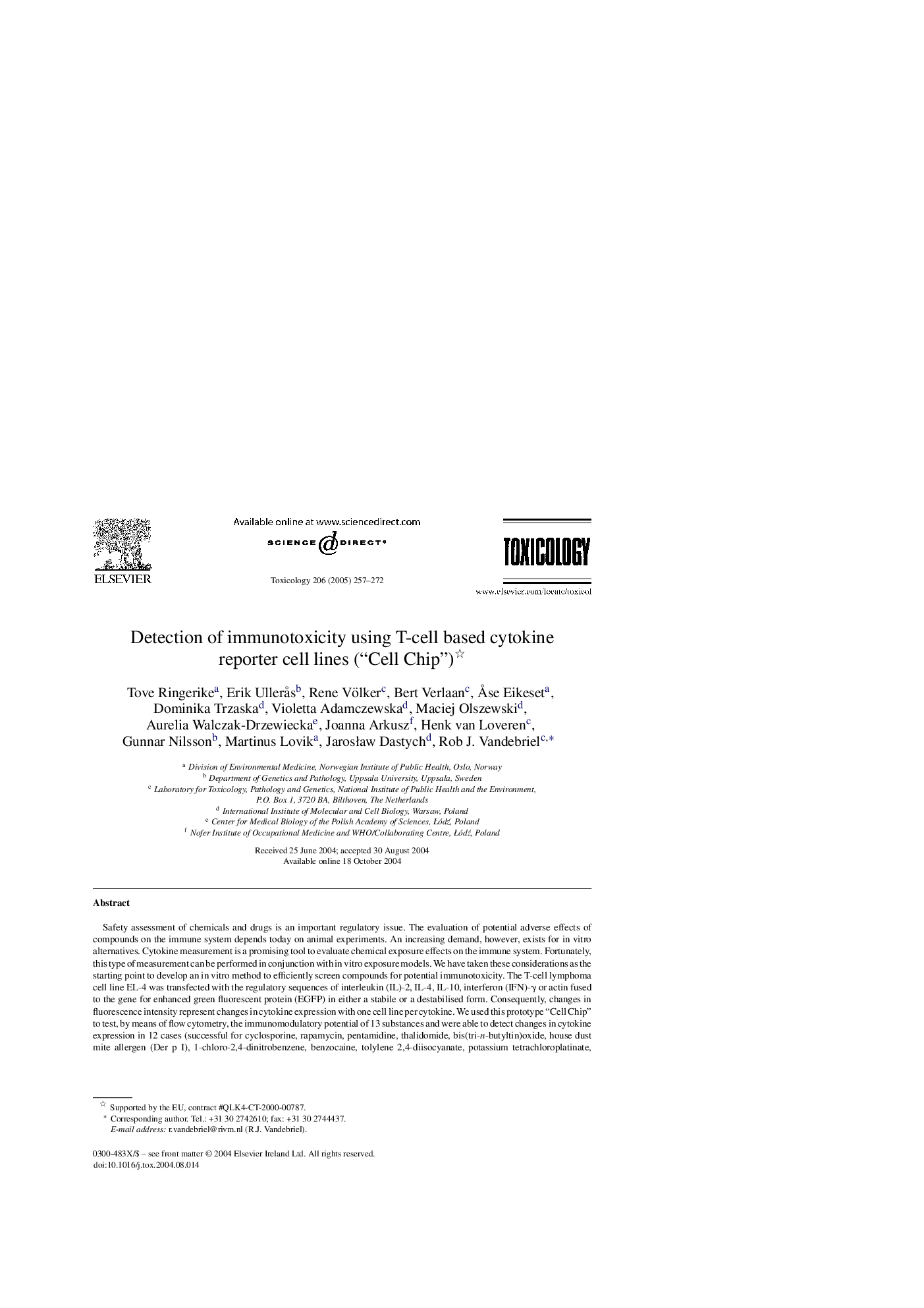| Article ID | Journal | Published Year | Pages | File Type |
|---|---|---|---|---|
| 9035185 | Toxicology | 2005 | 16 Pages |
Abstract
Safety assessment of chemicals and drugs is an important regulatory issue. The evaluation of potential adverse effects of compounds on the immune system depends today on animal experiments. An increasing demand, however, exists for in vitro alternatives. Cytokine measurement is a promising tool to evaluate chemical exposure effects on the immune system. Fortunately, this type of measurement can be performed in conjunction with in vitro exposure models. We have taken these considerations as the starting point to develop an in vitro method to efficiently screen compounds for potential immunotoxicity. The T-cell lymphoma cell line EL-4 was transfected with the regulatory sequences of interleukin (IL)-2, IL-4, IL-10, interferon (IFN)-γ or actin fused to the gene for enhanced green fluorescent protein (EGFP) in either a stabile or a destabilised form. Consequently, changes in fluorescence intensity represent changes in cytokine expression with one cell line per cytokine. We used this prototype “Cell Chip” to test, by means of flow cytometry, the immunomodulatory potential of 13 substances and were able to detect changes in cytokine expression in 12 cases (successful for cyclosporine, rapamycin, pentamidine, thalidomide, bis(tri-n-butyltin)oxide, house dust mite allergen (Der p I), 1-chloro-2,4-dinitrobenzene, benzocaine, tolylene 2,4-diisocyanate, potassium tetrachloroplatinate, sodium dodecyl sulphate and mercuric chloride; unsuccessful for penicillin G). In conclusion, this approach seems promising for in vitro screening for potential immunotoxicity, especially when additional cell lines besides T-cells are included.
Keywords
Related Topics
Life Sciences
Environmental Science
Health, Toxicology and Mutagenesis
Authors
Tove Ringerike, Erik UllerÃ¥s, Rene Völker, Bert Verlaan, Ã
se Eikeset, Dominika Trzaska, Violetta Adamczewska, Maciej Olszewski, Aurelia Walczak-Drzewiecka, Joanna Arkusz, Henk van Loveren, Gunnar Nilsson, Martinus Lovik, JarosÅaw Dastych,
